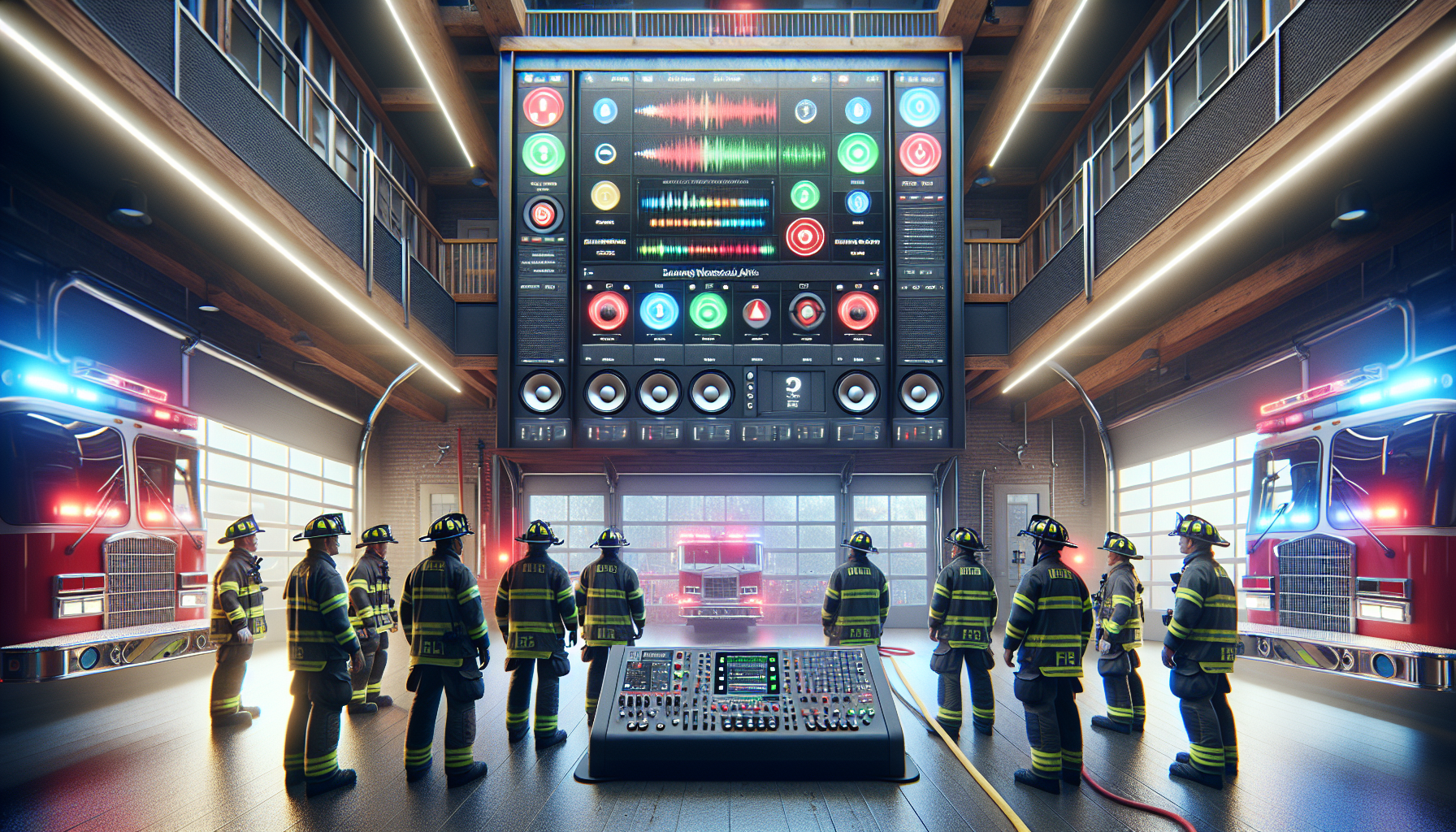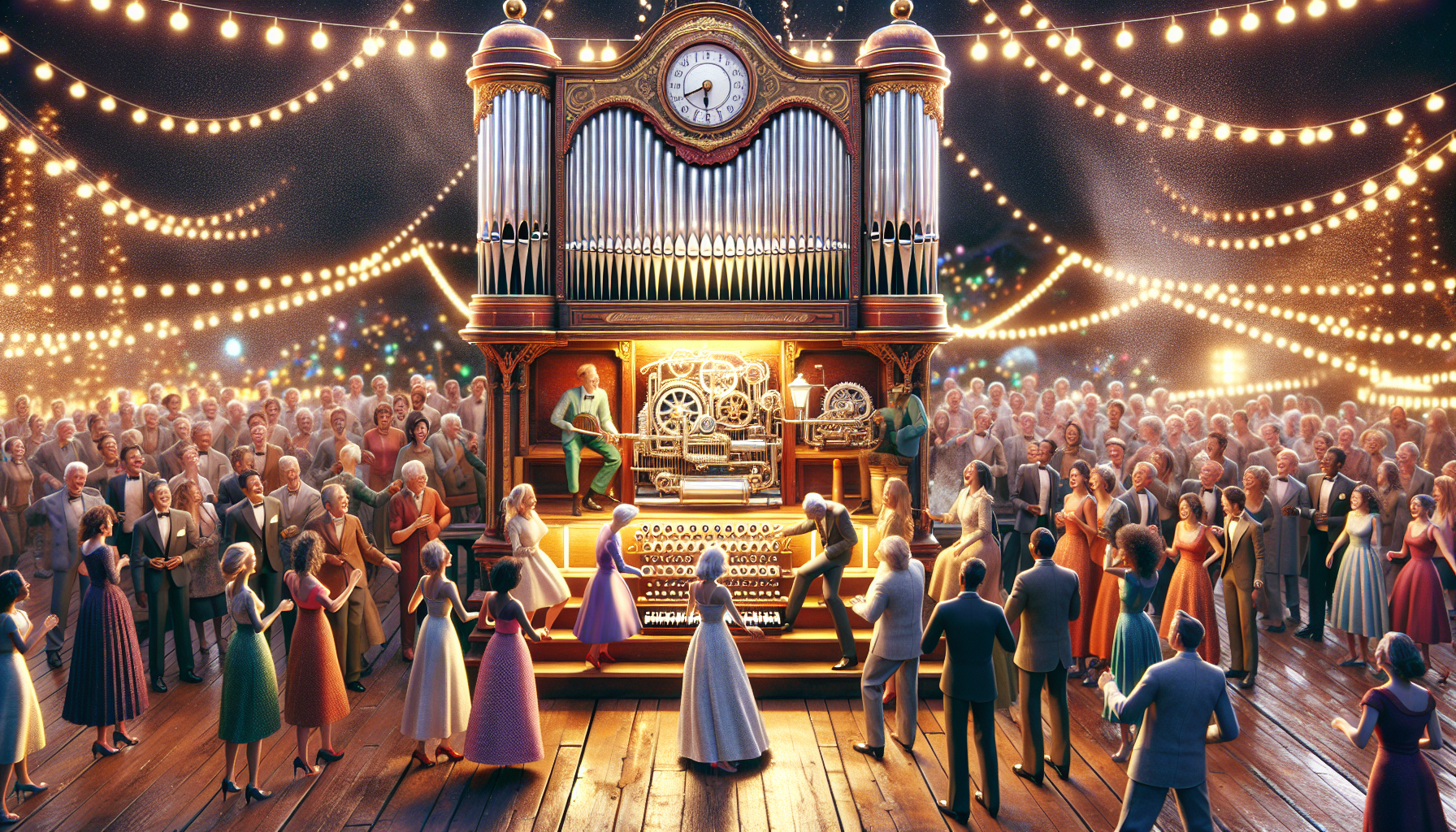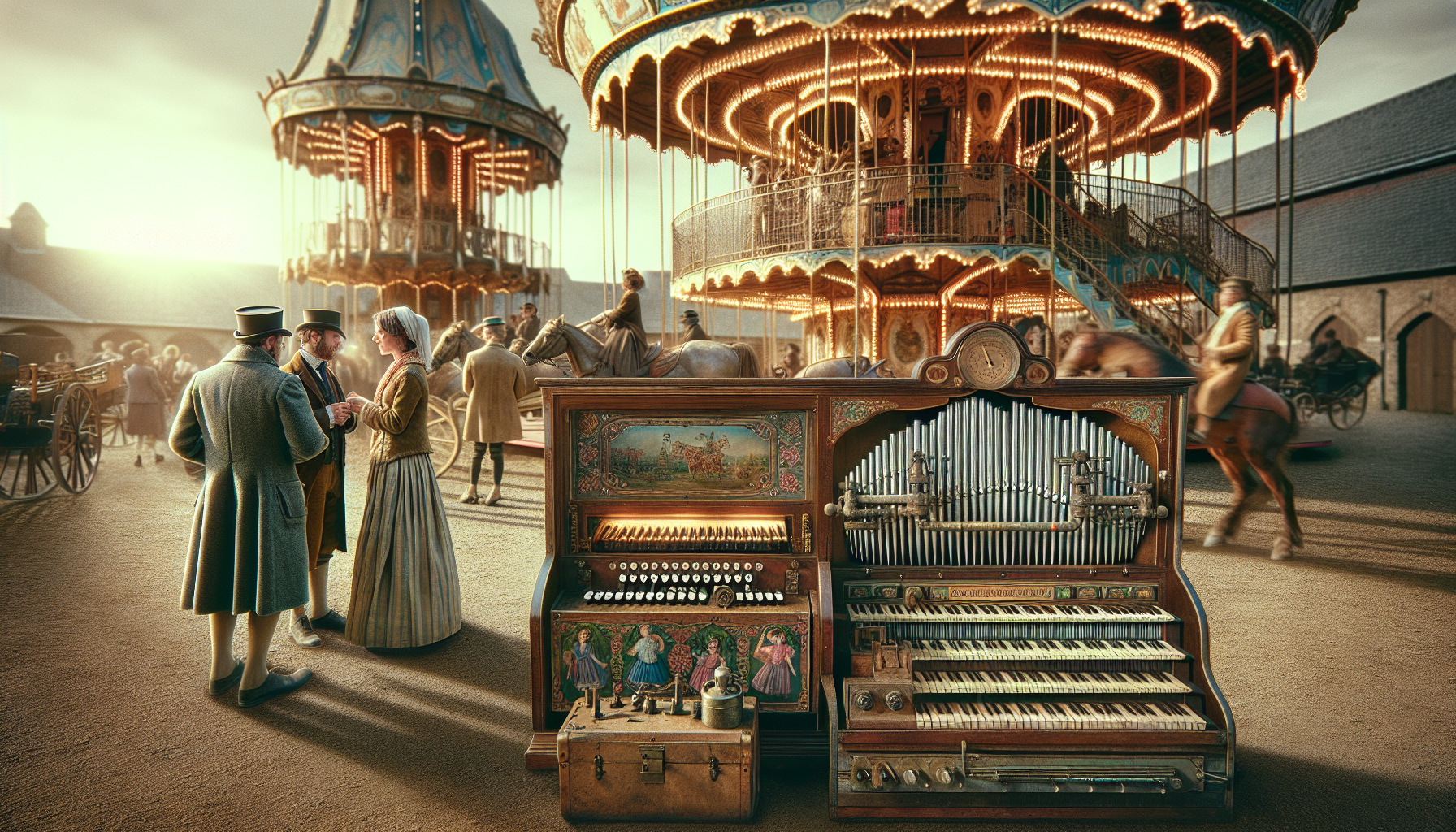In a world where sound envelops us constantly, from the rhythmic hum of city life to the serene whispers of nature, the quest for creating harmonious soundscapes has become more than just an art—it’s an innovative science. Imagine stepping into a realm where the power of sound is not only heard but felt, where the fine-tuning of whistles creates an auditory experience that transcends traditional music boundaries. This is the captivating world of tuned whistle arrays, a burgeoning field that merges creativity with technology to unlock new dimensions in music production and environmental acoustics. 🎶
The concept of tuned whistle arrays might seem esoteric at first glance, yet it holds the potential to revolutionize how we perceive and produce sound. At its core, it involves the strategic arrangement and manipulation of whistles, each precisely calibrated to specific frequencies, creating a rich tapestry of tones that can be tailored to evoke specific emotions or enhance a particular ambiance. This cutting-edge approach is not merely an academic exercise; it’s being embraced by forward-thinking musicians, sound engineers, and environmental designers who see its potential to craft immersive auditory experiences. From the concert hall to urban sound installations, the applications of these arrays are as varied as they are exciting.
The Science Behind Tuned Whistle Arrays
The intriguing concept of tuned whistle arrays has captured the interest of both music enthusiasts and acoustic researchers alike. These arrays, often comprised of multiple whistles arranged in a specific configuration, can create harmonious soundscapes and offer novel opportunities for musical expression. But what exactly makes tuned whistle arrays so fascinating? It all begins with an understanding of the basic principles of sound and acoustics. A whistle, in its simplest form, is an acoustic resonator. When air is blown into it, the air column inside the whistle vibrates, producing sound. The pitch of this sound is primarily determined by the length and diameter of the whistle. Tuned whistle arrays take advantage of these principles by incorporating multiple whistles, each designed to resonate at different frequencies. By doing so, they can produce a wide range of pitches and harmonics.
One of the key benefits of tuned whistle arrays is their ability to generate complex, layered soundscapes. Unlike a single whistle, which produces a pure, singular tone, an array can create a rich tapestry of sounds. Each whistle in the array contributes its own unique pitch, allowing for the exploration of harmony and dissonance. This makes them invaluable tools in both traditional and contemporary music production. Furthermore, the spatial arrangement of the whistles can influence the sound’s texture and depth. By carefully positioning the whistles in an array, musicians and composers can manipulate the sound waves to create immersive auditory experiences.
In recent years, the development of tuned whistle arrays has been propelled by advancements in material science and digital technology. Modern arrays are often crafted from high-quality materials that enhance their acoustic properties, such as metal alloys or specialized plastics. Additionally, digital technology allows for precise control over the tuning and arrangement of the whistles. This opens up a world of possibilities for experimentation and innovation in music production. As the following table demonstrates, there are several factors to consider when designing a tuned whistle array:
| Factor | Description |
|---|---|
| Material | Different materials can affect the sound quality and resonance. |
| Whistle Length | Determines the pitch; longer whistles produce lower pitches. |
| Arrangement | The spatial configuration can influence sound interaction. |
| Digital Control | Enables precise tuning and dynamic changes during performance. |
For a more detailed understanding of how these arrays work, check out this video on YouTube that explains the science behind them.
Applications in Music Production
The potential of tuned whistle arrays in music production is vast, offering both established and emerging musicians new avenues for creativity. These arrays can be used to compose intricate pieces that might not be possible with traditional instruments alone. One of the most exciting applications is their ability to produce microtonal music, which involves pitches that exist between the standard notes found in Western music scales. This is achieved by finely tuning each whistle in the array to slightly different frequencies, creating intervals smaller than a semitone. The resulting sound can be both haunting and beautiful, adding a new dimension to musical compositions.
Moreover, tuned whistle arrays are particularly beneficial in creating ambient soundscapes. By utilizing an array of whistles tuned to complementary pitches, musicians can produce sounds that blend seamlessly with natural environments. This is especially useful for composers who work on film scores, as they can enhance the atmosphere of a scene by incorporating natural-sounding elements into their music. Additionally, the portability and versatility of these arrays make them ideal for live performances and improvisational sessions. Musicians can easily adjust the arrangement and tuning of the whistles to suit different acoustic settings, allowing for spontaneous creativity.
The table below compares the use of tuned whistle arrays in traditional versus modern music production:
| Aspect | Traditional Music | Modern Music |
|---|---|---|
| Composition | Focus on harmony and melody. | Incorporation of microtonality and experimental sounds. |
| Performance | Often static arrangements. | Dynamic and adaptable configurations. |
| Technology | Limited to acoustic instruments. | Integration with digital effects and software. |
Interested in how modern musicians use these arrays? Watch the fascinating performance video to see them in action.
Building Your Own Tuned Whistle Array
Creating your own tuned whistle array can be a rewarding and educational experience, providing insight into both acoustics and musical theory. The first step is to determine the range of pitches you want your array to cover. This will guide your decisions regarding the length and diameter of each whistle. For those new to this process, it might be helpful to start with a simple array of three to five whistles, gradually expanding as you become more comfortable with the principles involved. When selecting materials, consider factors such as durability, weight, and acoustic properties. Metals like brass or aluminum are popular choices for their resonant qualities, but high-grade plastics can also produce excellent results.
Once you’ve gathered your materials, the next step is to assemble the array. Precision is crucial here, as even slight deviations in dimensions can affect the tuning. It’s advisable to use tools like calipers and tuning apps to ensure accuracy. After assembling the array, test each whistle to confirm it produces the desired pitch. Fine-tuning may be necessary, which can often be achieved by adjusting the length or applying slight modifications to the whistle’s opening. Digital tools can also assist in this process, offering real-time feedback and allowing for precise adjustments.
Here’s a checklist to help you get started:
- Determine desired pitch range.
- Select appropriate materials.
- Assemble the whistles with precision.
- Test and fine-tune each whistle.
- Experiment with different configurations and digital enhancements.
Building your own tuned whistle array not only fosters a deeper understanding of music production but also encourages creative exploration. Whether you’re a seasoned musician or a curious hobbyist, the journey is sure to be both challenging and rewarding. 🎵

Conclusion
The exploration of tuned whistle arrays opens a new chapter in the realm of soundscapes and music production, revealing the intricate dance between physics and creativity. Throughout this article, we have journeyed through the fundamental principles of how these arrays operate, the historical context of their development, and their transformative potential in various fields. This powerful blend of acoustics and artistry not only promises to redefine musical experiences but also offers innovative solutions for architectural acoustics, sound therapy, and beyond.
One of the key points we discussed is the underlying physics of tuned whistle arrays. By harnessing the principles of fluid dynamics and resonance, these arrays can produce harmonious tones that are both precise and dynamic. This level of control over sound waves enables musicians and sound engineers to craft auditory experiences that are both unique and emotionally resonant. The ability to manipulate sound in such a refined manner can lead to new musical genres and compositions, expanding the boundaries of what is sonically possible.
Historically, the concept of using whistles in musical settings is not new, but the sophistication with which we can now design and implement these arrays is unprecedented. We traced the evolution of this technology from simple wind instruments to complex arrays capable of producing an orchestral range of sounds. This historical perspective highlights the innovative spirit of musicians and scientists alike, who have consistently pushed the envelope to enhance our auditory environments.
The application of tuned whistle arrays extends far beyond music production. In architectural acoustics, these arrays can be employed to create environments that are acoustically optimized, enhancing both the aesthetic and functional qualities of a space. For instance, in concert halls or public spaces, strategically placed whistle arrays can mitigate unwanted noise and enhance desirable sounds, creating a more pleasant and immersive experience for occupants.
Moreover, the potential therapeutic applications of these arrays are worth noting. Sound therapy has long been used to promote relaxation and well-being, and the precise control offered by tuned whistle arrays can refine these practices, offering tailored soundscapes that cater to individual needs. This could revolutionize the way we approach mental health and well-being, providing non-invasive and effective therapeutic options.
The environmental implications of tuned whistle arrays are also significant. By using natural airflows and sustainable materials, these arrays can reduce the carbon footprint associated with traditional sound amplification systems. This aligns with global efforts to create more sustainable and eco-friendly technological solutions, making tuned whistle arrays not only a boon for music and sound enthusiasts but also a step forward in environmental conservation.
As we conclude our exploration of tuned whistle arrays, it becomes evident that this technology holds the key to a harmonious integration of sound and environment. The potential applications are vast and varied, from revolutionizing the music industry to enhancing public and private spaces acoustically. The ability to create finely tuned soundscapes opens up new avenues for creativity and innovation, inviting artists, engineers, and scientists to collaborate and explore the possibilities.
In light of these insights, we encourage readers to engage with this burgeoning field. Whether you are a musician looking to experiment with new sounds, an architect seeking to design acoustically optimal spaces, or simply a curious mind eager to learn, there is a place for you in the world of tuned whistle arrays. Share this article with your network to spread awareness of this exciting technology, and consider how you might incorporate these concepts into your own projects or interests. 🎶
For further reading and to stay updated on the latest developments in this field, consider exploring resources such as Nature Acoustics Journal and Sound On Sound Magazine. These platforms offer in-depth articles and research papers that delve into the intricacies of sound technology and innovation.
In closing, the power of tuned whistle arrays lies not only in their technical capabilities but also in their ability to inspire and connect us through the universal language of sound. As we unlock the potential of these arrays, we unlock new ways of experiencing and understanding the world around us. Let’s embrace this journey with open minds and ears, ready to harmonize with the future of sound. 🌟
Toni Santos is a visual historian and creative artisan whose work channels the bold spirit of the steam-powered era—a time when imagination, mechanics, and ambition converged to reshape the modern world. Through richly detailed visual narratives and handcrafted design, Toni celebrates the legacy of steam innovation as both an artistic and technological revolution.
Driven by a passion for mechanical aesthetics, forgotten inventions, and industrial-age ingenuity, Toni reimagines the world of steam through illustrations, tactile artifacts, and storytelling that capture the poetry of pressure, motion, and invention. From piston-driven engines to brass-detailed diagrams, each piece reveals how steam wasn’t just power—it was promise.
With a background in visual design and historical research, Toni brings a craftsman’s eye and a dreamer’s heart to the stories of tinkerers, inventors, and visionaries who shaped the 19th century. His work doesn’t merely document machines—it honors the culture, courage, and creativity that drove a world to reimagine itself through gears, valves, and vapor.
As the creative voice behind Vizovex, Toni shares curated articles, reconstructed blueprints, and visual interpretations that bring this industrial past to life. His collections serve as a tribute to:
The elegance of steam-era design and innovation
The human stories behind great mechanical feats
The aesthetic beauty found in function and form
The echo of invention in today’s creative world
Whether you’re a history lover, a fan of steampunk, or an admirer of antique technology, Toni welcomes you into a world where art and machinery fuse, one cog, one drawing, one rediscovered marvel at a time.





